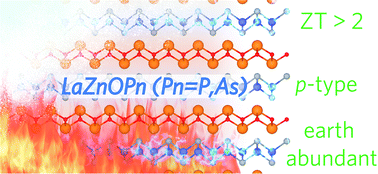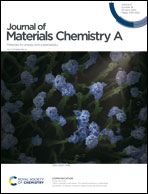Computational prediction of the thermoelectric performance of LaZnOPn (Pn = P, As)†
Abstract
High-efficiency earth-abundant thermoelectric materials present an environmentally friendly route for power generation via waste-heat harvesting. Whilst record thermoelectric efficiencies have been achieved in recent years, the leading materials tend to contain toxic and rare elements, including Pb, Te and Bi, which can be problematic commercially. In this study, the thermoelectric capabilities of two earth-abundant candidate thermoelectric materials LaZnOP and LaZnOAs have been investigated using density functional theory (DFT). The electronic structure and band alignment of both materials have been calculated using hybrid DFT including spin–orbit coupling effects, and indicate that both materials should be p-type dopable with highly mobile charge carriers. We analyse the vibrational properties and calculate the lattice thermal conductivity of LaZnOPn (Pn = P, As) using lattice dynamics and find both materials to exhibit highly anisotropic thermal transport, driven by differences in phonon lifetimes and group velocity. We calculate the electronic transport properties, including predicted ZTs, for LaZnOP and LaZnOAs and conclude that both LaZnOP and LaZnOAs are promising candidate materials for high-temperature thermoelectric applications. Furthermore, we provide insight into the effects of nanostructuring during processing on the thermoelectric potential of both materials.



 Please wait while we load your content...
Please wait while we load your content...